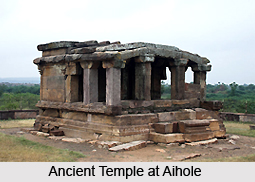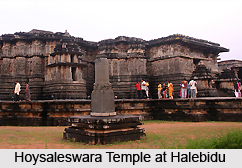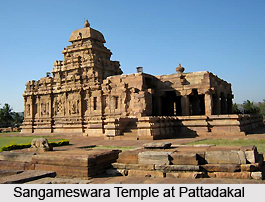 Archaeological sites in Karnataka are the representatives of some of the finest architecture of ancient era. Various dynasties that ruled over the region have left their cultural imprints through various exquisite monuments. These have been well preserved and in some cases restored by the Archaeological Survey of India. Inscriptions have also been found in many of the temples which narrate many aspects of the social structure existent in bygone era. Relics of pre historic era have also been found in these sites which showcase the lifestyles of different ancient civilizations.
Archaeological sites in Karnataka are the representatives of some of the finest architecture of ancient era. Various dynasties that ruled over the region have left their cultural imprints through various exquisite monuments. These have been well preserved and in some cases restored by the Archaeological Survey of India. Inscriptions have also been found in many of the temples which narrate many aspects of the social structure existent in bygone era. Relics of pre historic era have also been found in these sites which showcase the lifestyles of different ancient civilizations.
Aihole
Aihole situated in Bagalkot district of Karnataka is a historical temple complex. The place was the first capital of Chalukya kingdom. The 125 ancient temples found in the village have been categorized into 22 groups by the archaeological department. Brick structures belonging to pre-Chalukyan era have also been recovered in Aihole. The temple architecture exhibits an exquisite blend of different architectural styles. Numerous inscriptions have also been found on the temples which illuminates several hidden aspects of Indian history.
Byse
Byse is another significant archaeological site of Karnataka, located in Shimoga district. A site known as `Nilaskal Byana` has furnished megalithic structures. Numerous standing stones have been found here which dates back to probably earlier than 1000 BCE. Some of them have been estimated to have astronomical associations.
 Chandravalli
Chandravalli
Chandravalli, in Chitradurga district, is a valley formed by three hills namely Cholagudda, Kirabanakallu and Chitradurga. Coins of different dynasties including Hoysalas, Satavahana and Vijayanagar have also been excavated here along with painted bowls and earthen pots. The place also houses a rock inscription of Mayurasharma who was the founder of the first Kannada dynasty Kadambas. Artefacts belonging to pre historic civilizations have been recovered from Chandravalli.
Halebidu
Halebidu is situated in Hassan district. In 12th century it was the regal capital of the Hoysala Empire. Some of the best embodiments of Hoysala architecture can be witnessed in the Kedareswara and Hoysaleswara temples. Excellent artistry can also be seen in the temple sculptures, many of which have been destroyed by the invaders.
Jalasangvi
Jalasangvi, situated in Bidar district, houses a few Chalukya temples, all standing at different stages of ruins. The place was established by Vikramaditya VI of Chalukya dynasty.
Khyad
Khyad is an important archaeological site located in Bagalkot district of the state. Fossils of prehistoric Stone Age have been discovered here. Khyad has unfolded many tales of prehistoric era.
Maski
Maski, in Raichur district, is a village situated on the bank of Maski River, a tributary of Tungabhadra River. Discovery of a minor rock edict belonging to Emperor Ashoka containing the name `Asoka` has rendered substantial importance to the place as an archaeological site. All the earlier edicts belonging to Emperor Ashoka had the name `Devanampiye piyadasi` but this was an exception. Excavations have signified the fact that Maski was inhabited by various civilizations belonging to Neolithic, Chalcolithic, Megalithic and early historical periods. Seals and many other artefacts have also been recovered.

Pattadakal
Pattadakal, located in Bagalkot district, has been declared as a World Heritage Site. The place is famed for Chalukya monuments. The village was once the capital of Chalukya dynasty and temples of the region were built between 7th to 9th centuries. Different architectural styles can be witnessed here. A number of Kannada language inscriptions have also been found which describes several past events. Some of the important monuments of Pattadakal are Sangameswara temple, Chandrasekhara temple, Kashivisvanatha temple, Galganatha temple and many more.
Sanganakallu
Sanganakallu is known as the first village settlement of Southern India. The village belonged to Neolithic age (3000 BC) where the people were engaged in the trade of stone tools. By 2000 BC the place had attained the fame of being the largest stone tool producing centre in South India. The boulders of Sanganakallu have been found to contain Neolithic rock art and hand percussion marks of rituals. The village sketches the Neolithic culture in great detail.
Venkatapura
Venkatapura, located in Raichur district is an archaeological site associated with Neolithic period. 45 cairns have been discovered in the village, some of which have large diameters of about 50 meters. Many of them are found in pairs or rings.
Other Archaeological sites in Karnataka
Other archaeological sites in Karnataka include Bachinagudda, Balligavi, Hallur, Hanakuni, Hirebenkal, Ikkeri, Kanaganahalli, Kyadigera, Lakkundi, Mudval, Manvi, Nadivi, Piklihal, Sidlaphadi, Tekkalakote, Udegolam, Watgal and many more.



















